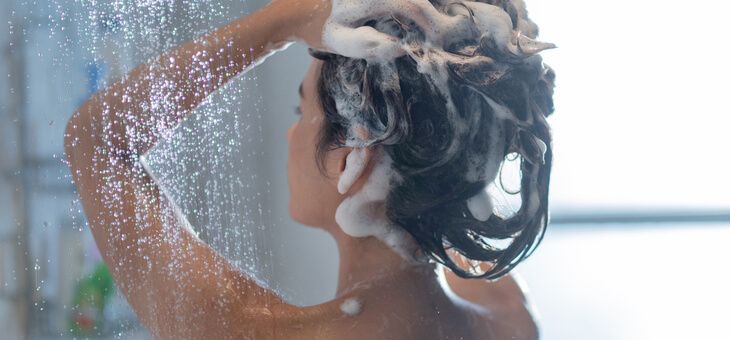It’s often part of your daily routine, but do you ever stop and think about if you are washing your hair ‘right’?
There is no truly ‘correct’ way to wash your hair. It depends on several factors including hair type, scalp needs, lifestyle and personal preferences.
Hair and scalp types differ greatly and weather conditions, what products you use and how active you are can all influence how, and how often, you wash your hair.
To assess what products you need, start with the scalp. Is there dandruff, oily build-up or redness? The scalp assessment is important as signs of inflammation can lead to hair loss.
If your scalp is too dry, you may be over-shampooing, and if there are signs of build-up it could be a case of not shampooing enough or not rinsing enough. Dandruff is going to require a specialist shampoo and the condition can worsen if you don’t keep a regular regime.
Read: Best fashion and beauty tools for travelling
Next up, examine your hair. Straight, tight curls, and wavy and loose curls are all going to require different products.
Straight hair is like a highway for oil. It’s easier for sebum – the oil your body produces through sebaceous glands just under the skin – to travel down the hair shaft, so people with straight hair will usually need to shampoo more often, probably every day or every other day.
Loose curls or wavy hair will probably need two to three shampoos a week and tight curls should consider only washing once a week using a specialist product and probably one that is sulphate-free. Sulphates are very effective at removing oil from your hair, but for already dry hair they can be damaging.
Read: The beauty gadgets celebrities swear by
If you are regularly getting build-up on the scalp and hair shaft and your hair is greasy by the end of the day it may be a sign you are not shampooing enough or your shampoo is not strong enough.
You might also need to shampoo more regularly if you use a lot of styling products, ironically including regularly using dry shampoo, which is fine for occasional use but can quickly build up.
People with a high activity level, especially if they include water sports, will also probably have to shampoo daily as sweat adds salts to the hair shaft and sea salt and chlorine can strip the hair follicle of protective oils.
And finally, the weather plays its part. Winter winds and cold temperatures can strip the hair, while more activity in summer will produce more sweat.
Once you have chosen the most suitable products for your hair, scalp wellness portal mindbodygreen recommends thoroughly working in the shampoo, focusing on the scalp.
Read: How to switch your skincare routine from summer to winter
That lovely massage hairdressers give you when shampooing your hair doubles as a way to methodically clean the scalp as well. If you have just been plonking on the shampoo and then rinsing it out chances are the scalp is being left out.
If you can, use a product with a nozzle to directly target the scalp.
There has also been a movement for no shampooing at all, sometimes known as the ‘no poo’ movement. The theory goes that regularly washing your hair removes all the natural oils, your scalp compensates by producing more oil and gets even more oily.
The ‘no poo’ movement claims that by no longer washing your hair, eventually your hair will adjust to not washing with a more balanced oil production.
This is anecdotal. There is no scientific evidence to back up these claims.
Some followers of the movement do rinse their hair in certain products, including diluted baking soda and vinegar, but generally only use water
Or you can take it to the extreme like Clementine Churchill, wife of Sir Winston, who used to wash her hair in benzene, much to the alarm of her family. In an era of many open flames in households, who can blame them?
If you enjoy our content, don’t keep it to yourself. Share our free eNews with your friends and encourage them to sign up.

